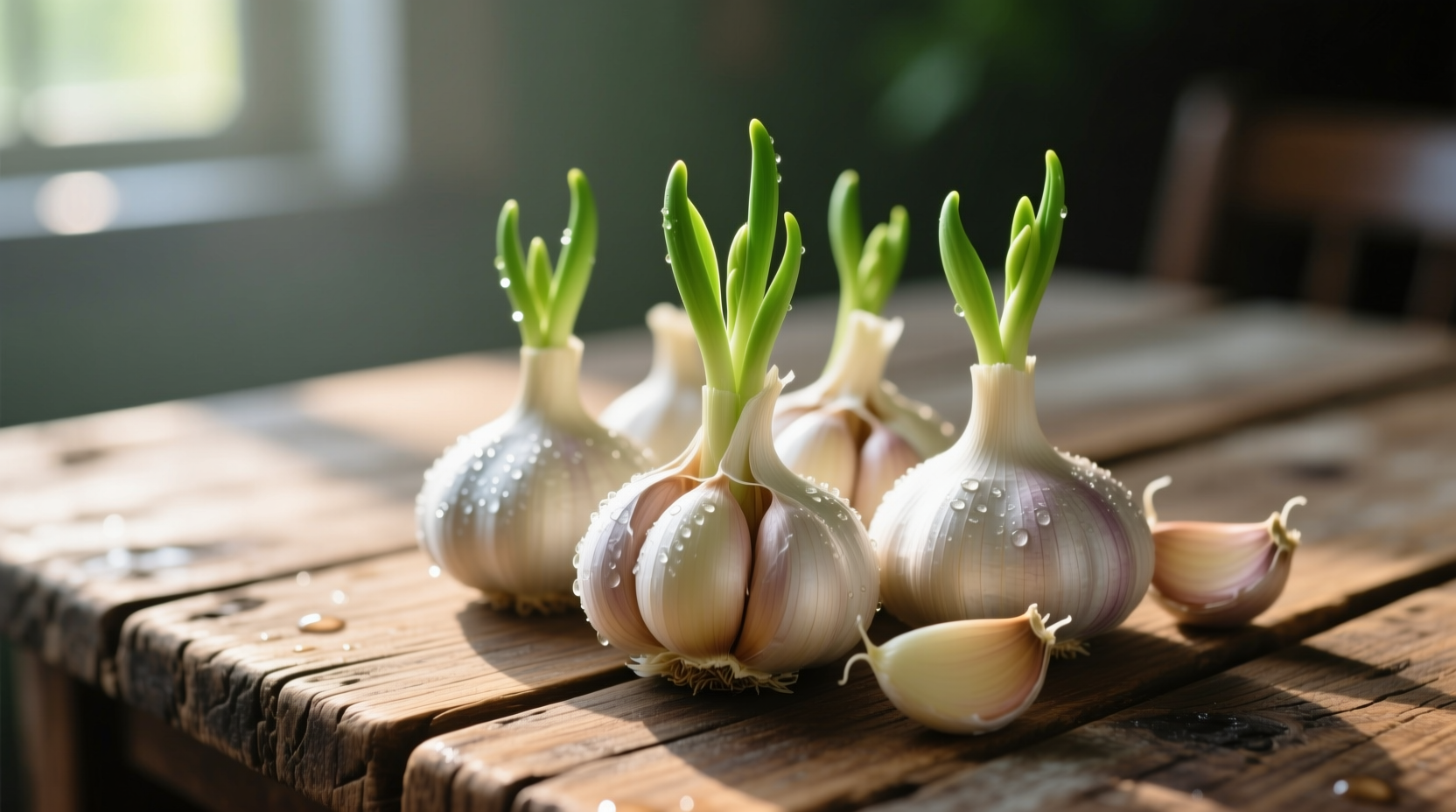Discover exactly how to select, store, and use fresh garlic to maximize flavor and nutritional benefits. Learn professional techniques for peeling, chopping, and cooking with fresh garlic that home cooks can implement immediately for restaurant-quality results.
Nothing transforms a dish like the vibrant, complex flavor of fresh garlic. Unlike pre-minced or powdered alternatives, fresh garlic delivers a bright, aromatic punch that elevates everything from simple pasta sauces to sophisticated braises. Understanding how to properly select, store, and prepare fresh garlic makes the difference between good cooking and exceptional culinary results.
How to Choose the Best Fresh Garlic Bulbs
Selecting quality garlic starts at the market. Look for firm bulbs with tight, papery skins that feel heavy for their size. Avoid any garlic with soft spots, green sprouts, or signs of mold. The cloves should feel solid when gently squeezed through the skin. Different varieties offer distinct flavor profiles:
| Garlic Variety | Flavor Profile | Best Culinary Uses |
|---|---|---|
| Silverskin | Strong, pungent | Raw applications, long-cooking dishes |
| Rocambole | Rich, complex, slightly nutty | Roasting, sauces, finishing dishes |
| Elephant | Mild, slightly sweet | Raw preparations, delicate sauces |
Seasonality matters too—freshly harvested garlic (available late spring through summer) has higher moisture content and milder flavor compared to cured garlic available year-round. When shopping for how to select fresh garlic bulbs at their peak, look for firmness and avoid any with visible sprouting, which indicates aging.
Proper Storage Techniques for Maximum Freshness
Improper storage causes garlic to sprout, soften, or develop mold. The ideal conditions for storing fresh garlic maintain its quality for months:
- Temperature: 60-65°F (15-18°C) is optimal—never refrigerate whole bulbs
- Humidity: 60-70%—too dry causes shriveling, too moist encourages mold
- Ventilation: Use mesh bags or open baskets, never plastic containers
- Light: Store in complete darkness to prevent sprouting
According to USDA agricultural research, properly stored garlic maintains 95% of its allicin content (the compound responsible for garlic's health benefits) for up to 6 months. Once you separate cloves from the bulb, use them within 10 days for best flavor. Never store peeled cloves in oil at room temperature due to botulism risk—refrigerate oil-infused garlic and use within 4 days.

Professional Preparation Methods
How you prepare garlic dramatically affects its flavor profile. The enzymatic reaction that creates garlic's characteristic aroma begins when cells are ruptured:
Peeling Techniques
For quick peeling, place cloves on a cutting board, lay the flat side of a chef's knife over them, and give a firm tap. The skin will separate easily. For larger quantities, shake cloves in a sealed container—this peeling fresh garlic techniques method saves significant time.
Chopping vs. Crushing
Finely chopped garlic releases moderate flavor compounds, ideal for sautéing. Crushed garlic (using a press or side of knife) creates more intense flavor by releasing additional enzymes. For subtle background notes, slice garlic thinly; for bold presence, mince finely. Remember that smaller pieces burn more easily—adjust cooking time accordingly.
Optimal Cooking Applications
Understanding garlic's behavior under heat transforms your cooking. When implementing cooking with fresh garlic tips, consider these professional guidelines:
- Raw applications: Finely mince and let sit 10 minutes before using to maximize allicin development
- Sautéing: Add to cold oil, then heat gradually to prevent burning (garlic burns at 325°F/163°C)
- Roasting: Whole heads with olive oil create sweet, mellow spreadable garlic
- Infusing: Gently heat in oil below smoking point for flavored bases
The timing of garlic addition matters significantly. For subtle background notes, add early in cooking; for pronounced garlic flavor, add in the last 2-3 minutes. Burnt garlic turns bitter—remove from heat just before it reaches golden brown.
Nutritional Advantages of Fresh Garlic
Fresh garlic offers superior nutritional benefits compared to processed forms. The compound allicin, responsible for most health benefits, forms only when fresh garlic is cut or crushed. According to research published in the Journal of Agricultural and Food Chemistry, fresh garlic contains up to 15 times more allicin than jarred minced garlic.
When evaluating health benefits of fresh garlic, consider these verified advantages:
- Supports cardiovascular health through blood pressure regulation
- Contains potent antioxidants that combat oxidative stress
- Exhibits antimicrobial properties against certain bacteria and fungi
- May enhance immune function when consumed regularly
For maximum benefit, consume fresh garlic raw or lightly cooked. Prolonged cooking destroys allicin—add garlic during the final minutes of cooking when possible.
Common Fresh Garlic Mistakes to Avoid
Even experienced cooks make these frequent errors with fresh garlic:
- Burning garlic: Garlic scorches quickly—cook over medium-low heat
- Adding too early: Delicate compounds evaporate with prolonged cooking
- Using sprouted garlic: Green sprouts taste bitter—remove before use
- Storing improperly: Refrigeration causes premature sprouting and texture changes
Understanding these fresh garlic shelf life considerations prevents wasted ingredients and disappointing results. When garlic develops brown spots or soft areas, discard those cloves but use the remainder immediately.
When to Choose Fresh Garlic Over Alternatives
Not every recipe benefits from fresh garlic. Consider these context boundaries for fresh garlic usage:
- Use fresh garlic: For dishes where garlic is a featured flavor (aglio e olio, garlic bread, aioli)
- Use powder: In spice rubs or when uniform distribution is critical
- Use minced (jarred): For quick weeknight meals when convenience outweighs optimal flavor
The flavor complexity of fresh garlic makes it irreplaceable in dishes where garlic plays a starring role. For background notes in long-simmered sauces, powder provides consistent flavor without risk of burning.











 浙公网安备
33010002000092号
浙公网安备
33010002000092号 浙B2-20120091-4
浙B2-20120091-4